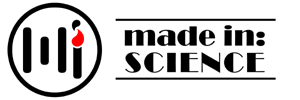Question:
Which common surfaces have the highest concentration of fungi and bacteria? Why?
Hypothesis:
A hypothesis is a possible answer to your research question. It explains what you think will happen before you do the experiment. You can build your hypothesis using this sentence structure:
If (something changes — the independent variable), then (you expect this result — the dependent variable), because (reason or scientific explanation).
In Our Experiment:
- Independent variable = The surface (desk, phone, doorknob, etc.)
- Dependent variable = The amount or type of micro-organisms that grow
Example:
- If the surface is touched very often (like a phone or doorknob), then more fungi and bacteria will grow, because more people transfer germs to it.
- If the surface is usually cleaned (like a bathroom sink), then fewer colonies will grow, because disinfectants reduce micro-organisms.
- If the surface is in a humid area (like a sponge), then more fungi will grow, because fungi grow better in moist environments.
Objective:
Investigate the growth of fungi and bacteria collected from different surfaces using gelatin as a culture medium, to explain how micro-organisms are spread in everyday environments.
Materials:
- Petri dishes
- Unflavored gelatin
- Hot water
- Sugar
- Cotton swabs
- Labels or tape and pen
- Gloves
- Bunsen burner
Procedures:
- Prepare the gelatin by mixing it with hot water and a teaspoon of sugar.
- Pour the mixture into the bottom of each container and let it set.
- Label each container with the name of the surface you will test.
- Wearing gloves, rub a cotton swab on a surface (e.g., desk, phone, doorknob).
- Light up the bunsen burner to create a safe/clean space. Follow the instructions.
- Gently press the swab onto the gelatin surface inside the container.
- Seal the container and store it in a warm, dark place for 3 to 5 days.
- Do NOT open the containers once sealed.
Results:
Data Collection Table (After Incubation)
| Sample | Surface Swabbed | Number of Colonies | Color(s) | Shape/Texture | Notes |
|---|---|---|---|---|---|
| A | |||||
| B | |||||
| C | |||||
| D |
Discussion:
Answer the following questions (full answers)
- Which surfaces showed the most microbial growth? Why do you think that is?
- How can you tell the difference between fungi and bacteria in your samples?
- Were there any results that surprised you? Explain.
- What do these results tell us about hygiene in daily life?
Conclusion:
- Was your hypothesis correct? Why or why not?
- What did you learn about micro-organisms from this experiment?
- How can we apply this knowledge in real life?
ATTENTION: DO NOT open containers after incubation. Dispose of all samples safely after the lab!
